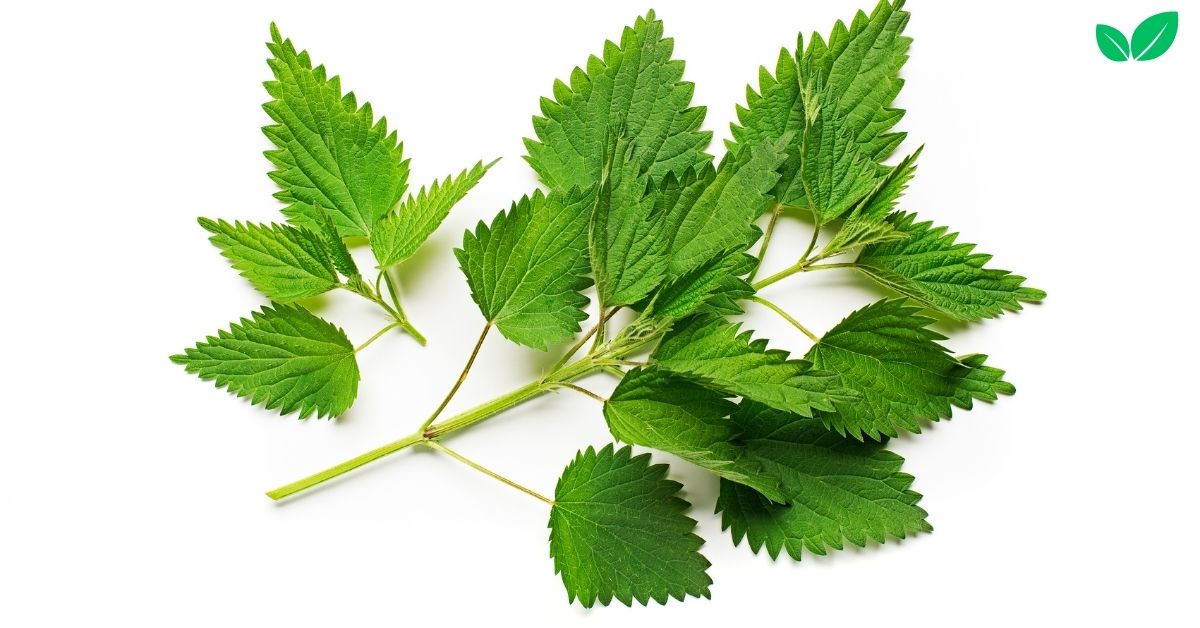Green nettle, or Urtica dioica, is a widespread and resilient herbaceous plant known for its medicinal, culinary, and ecological importance. Commonly called stinging nettle, this plant is easily recognized by its heart-shaped, serrated leaves covered in fine, stinging hairs. Native to Europe, Asia, North Africa, and North America, Urtica dioica has a rich history in traditional medicine, as a food source, and in sustainable agriculture. Beyond its utility to humans, green nettle plays a critical role in supporting biodiversity, enriching soil, and promoting ecosystem stability. This article explores the environmental niche of green nettle, covering its habitat, ecological functions, conservation benefits, and sustainable uses.
1. Understanding Green Nettle (Urtica dioica)
Green nettle is a perennial plant in the family Urticaceae, thriving in a variety of temperate environments. Known for its stinging hairs, Urtica dioica has developed adaptations that deter herbivores, while also serving as a nutritious food source and medicinal plant for humans.
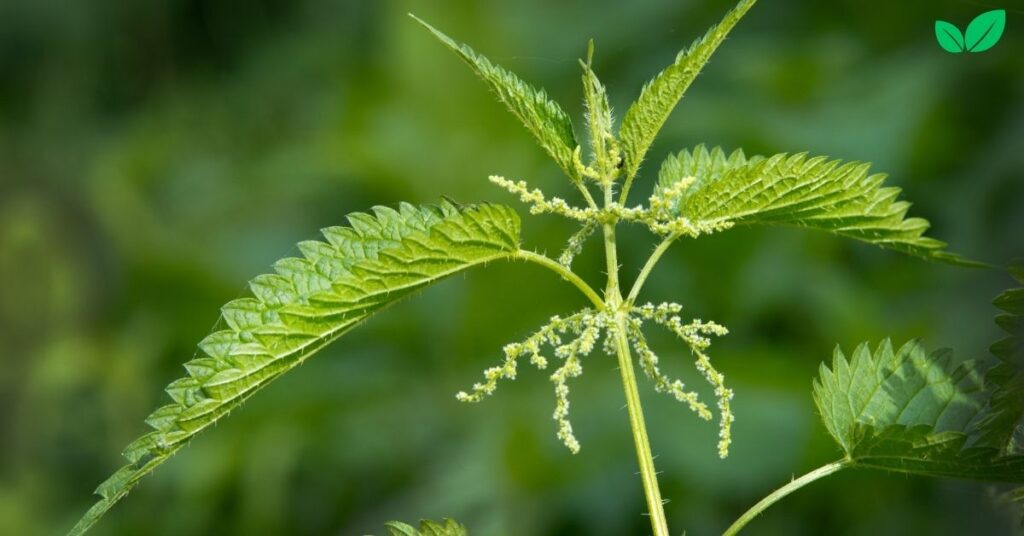
1.1. Physical Characteristics
- Leaves and Stems: Green nettle grows upright with simple, opposite leaves that are heart-shaped and have serrated edges. The stems and leaves are covered with fine, stinging hairs called trichomes, which release irritants like histamine and formic acid when touched.
- Stinging Mechanism: The plant’s stinging hairs serve as a defense mechanism. These hairs are brittle and break upon contact, injecting a mixture of chemicals into the skin, causing a stinging sensation and redness. This adaptation protects the plant from grazing animals.
- Flowering and Reproduction: Green nettle produces small, greenish flowers arranged in dense clusters. It is dioecious, meaning individual plants are either male or female. Pollination occurs through wind, and after pollination, female plants produce tiny seeds that are dispersed by wind and water.
1.2. Geographic Distribution and Habitat
- Native Range: Urtica dioica is native to Europe, Asia, North Africa, and North America. Its distribution covers a wide range of temperate regions, and it thrives in areas with moderate to high moisture and fertile soil.
- Preferred Habitats: Green nettle grows abundantly along riverbanks, forests, meadows, and disturbed areas like roadsides and ditches. Its tolerance for nutrient-rich soils, especially those high in nitrogen, makes it a common sight near human settlements, compost heaps, and agricultural fields.
2. Ecological Role of Green Nettle in Natural Habitats
Green nettle plays a vital role in the ecosystems it inhabits, supporting biodiversity, improving soil health, and influencing plant-pollinator dynamics. Its ecological contributions make it a valuable plant in both natural and cultivated landscapes.
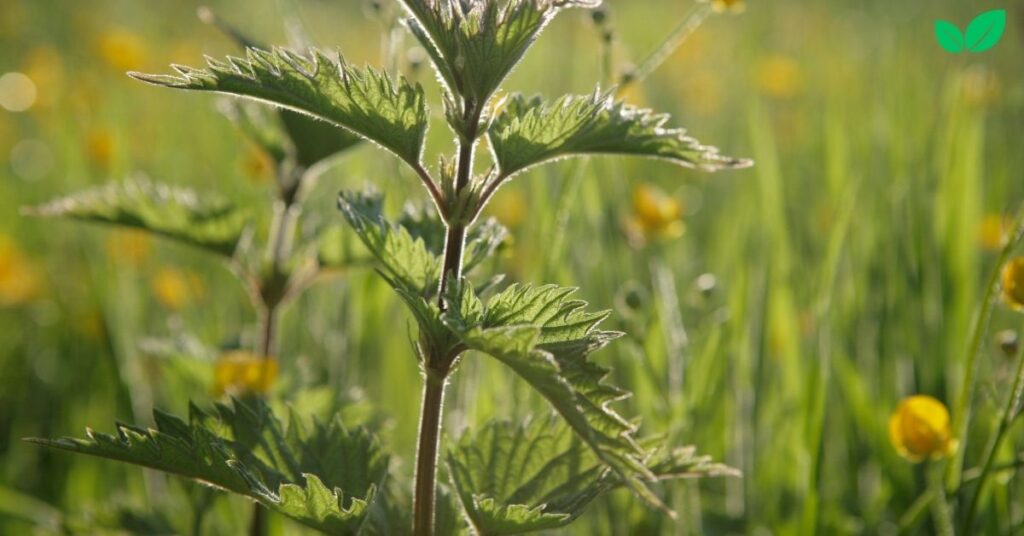
2.1. Habitat and Food Source for Wildlife
- Host Plant for Insects: Green nettle is a host plant for a variety of insect species, including the larvae of butterflies like the red admiral, peacock, and small tortoiseshell. These butterflies lay their eggs on nettle leaves, which serve as an essential food source for their caterpillars.
- Supporting Pollinators: While nettle flowers are wind-pollinated, they still attract pollinators, including certain bees and hoverflies, which visit the flowers for nectar and pollen. These pollinators contribute to the broader biodiversity of the area, helping maintain balanced ecosystems.
- Foraging Habitat for Birds and Mammals: The dense, upright growth of green nettle provides cover for small mammals, birds, and amphibians. Birds such as warblers and wrens use nettle patches as nesting sites, while small mammals forage for insects that live in the nettle’s microhabitat.
2.2. Contributions to Soil Health and Fertility
- Nitrogen Enrichment: Green nettle is an indicator plant for nitrogen-rich soils, as it prefers nutrient-dense environments. Through its growth and decomposition, nettle adds organic matter and nitrogen to the soil, enriching it and promoting the growth of other plants.
- Soil Erosion Control: The extensive root system of green nettle helps stabilize the soil, reducing erosion along riverbanks, slopes, and other areas prone to soil loss. By holding soil in place, nettle contributes to ecosystem resilience and prevents sediment runoff into water bodies.
- Supporting Soil Microorganisms: Nettle contributes to a healthy soil ecosystem by creating a nutrient-rich environment that supports beneficial bacteria, fungi, and other microorganisms. This microbial activity enhances soil fertility, benefiting other plants that grow nearby.
2.3. Carbon Sequestration and Climate Adaptation
- Carbon Storage: Like all green plants, nettle sequesters carbon dioxide during photosynthesis, storing carbon in its tissues. When nettle plants die and decompose, some of this carbon is returned to the soil, enhancing soil organic matter and contributing to carbon sequestration.
- Adaptation to Climate Change: Green nettle’s adaptability to various environments makes it resilient to changing climate conditions. Its ability to thrive in disturbed areas enables it to establish quickly in areas affected by land degradation, contributing to ecosystem recovery and biodiversity restoration.
3. Sustainable Uses and Benefits of Green Nettle
Green nettle has a rich history of use in traditional medicine, food, and textile production. These sustainable uses highlight its value as a multipurpose plant that can contribute to human well-being and environmental health.

3.1. Medicinal Uses and Health Benefits
- Traditional Medicine: Green nettle has been used in traditional medicine for centuries, especially in Europe and Asia, for its anti-inflammatory, diuretic, and antioxidant properties. It is commonly used to treat ailments like arthritis, allergies, and urinary tract infections.
- Rich Nutritional Profile: Nettle is highly nutritious, containing vitamins A, C, K, and several B vitamins, as well as minerals like iron, calcium, and magnesium. Its high chlorophyll content makes it a valuable addition to herbal teas and dietary supplements.
- Anti-Inflammatory Properties: Studies have shown that nettle contains compounds that reduce inflammation, which can benefit people with conditions like arthritis and other inflammatory diseases. Nettle extracts are often used in natural anti-inflammatory supplements.
3.2. Culinary Applications
- Edible Leaves and Stems: Nettle leaves are edible when cooked, which neutralizes the stinging hairs. They are often used in soups, stews, and sauces, providing a spinach-like flavor and a nutrient-rich addition to meals.
- Nettle Tea: Nettle leaves are commonly dried and brewed into tea, which is valued for its mild flavor and potential health benefits. Nettle tea is a popular herbal remedy, believed to support immune function and overall vitality.
- Sustainable Foraging: Foraging for wild nettle is a sustainable way to harvest a nutrient-dense food source without the environmental impact of cultivated crops. When harvested carefully, nettle populations can regenerate quickly, ensuring a continual supply.
3.3. Agricultural and Industrial Uses
- Organic Fertilizer: Green nettle can be made into a nutrient-rich fertilizer known as nettle tea or nettle manure, which is created by soaking nettle leaves in water. This fertilizer provides essential nutrients, particularly nitrogen, that support healthy plant growth in organic farming.
- Natural Insect Repellent: Nettle can be used as a natural insect repellent in gardens, as its strong scent deters certain pests. Nettle tea can also be sprayed on plants to strengthen them against pests and diseases, providing an alternative to chemical pesticides.
- Textile Production: Nettle fibers were traditionally used to make textiles before the rise of cotton. Nettle fibers are strong and durable, and recent interest in sustainable textiles has led to a resurgence of nettle fabric production as an eco-friendly alternative to synthetic fibers.
4. Environmental Impact and Challenges of Nettle Cultivation
While green nettle is generally considered a low-impact plant, some challenges and environmental considerations arise when cultivating it for large-scale use. Understanding these impacts is essential to ensuring sustainable practices.
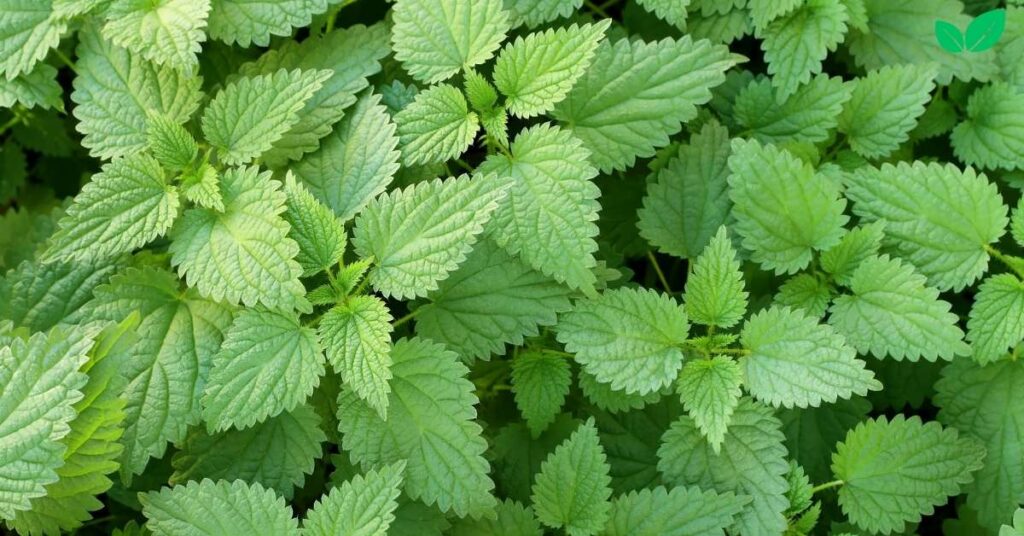
4.1. Invasive Potential and Habitat Competition
- Naturalized and Invasive Status: In regions where green nettle is not native, it can become invasive, spreading rapidly and outcompeting local flora. Its high adaptability allows it to dominate disturbed areas, potentially impacting native plant species and reducing biodiversity.
- Habitat Competition: Dense nettle growth can limit the establishment of other plant species, especially in nitrogen-rich environments. This competition for resources may lead to reduced plant diversity, particularly in areas where nettle becomes highly dominant.
- Invasive Management Strategies: In areas where nettle is invasive, controlled grazing, manual removal, and monitoring can help limit its spread and prevent negative impacts on native plant communities.
4.2. Soil and Water Impact
- Nutrient Leaching: Although nettle enriches soil, large stands of nettle in highly fertilized areas can contribute to nutrient leaching. Excess nitrogen, in particular, can leach into nearby water bodies, causing algal blooms and impacting aquatic ecosystems.
- Water Use Efficiency: Nettle is relatively water-efficient compared to many cultivated crops, as it can thrive in moist, nutrient-rich soils without excessive irrigation. However, large-scale nettle cultivation may require additional water in drier regions, increasing its water footprint.
4.3. Sustainable Harvesting Practices
- Overharvesting in the Wild: Nettle is commonly foraged in the wild, but overharvesting can threaten local populations and disrupt ecosystems. Sustainable foraging practices, such as leaving part of the plant behind, help protect nettle populations and maintain biodiversity.
- Seasonal Harvesting: The best time to harvest nettle is in spring when the leaves are young and tender. By focusing on seasonal harvesting, foragers and farmers can maximize the plant’s nutritional benefits and ensure that nettle populations have time to regenerate.
5. Conservation and Restoration Potential of Green Nettle
Green nettle’s adaptability and ecological contributions make it a valuable plant for habitat restoration, conservation, and rewilding projects. Its role in biodiversity support and soil health positions it as a resource for environmental restoration.
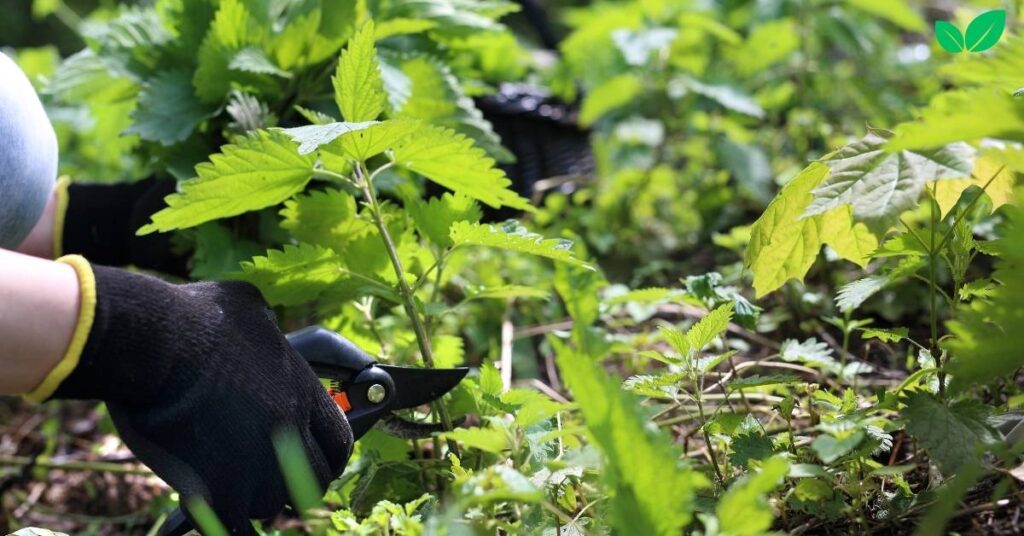
5.1. Habitat Restoration and Biodiversity Support
- Restoring Disturbed Land: Green nettle’s ability to grow in disturbed and degraded soils makes it an effective pioneer species for habitat restoration projects. It can establish quickly, stabilizing soil and creating habitat for other plant species to follow.
- Biodiversity Enhancements: By providing food and habitat for insects, birds, and mammals, nettle can increase biodiversity in restored ecosystems. Its presence supports a range of species and promotes ecological resilience in areas recovering from disturbance.
- Enhancing Pollinator Populations: As nettle supports various pollinators and serves as a host plant for butterfly larvae, it contributes to pollinator conservation efforts. Incorporating nettle into pollinator-friendly landscapes helps sustain local pollinator populations.
5.2. Role in Sustainable Agriculture and Agroforestry
- Alley Cropping and Permaculture: Nettle can be integrated into alley cropping and permaculture systems, where it provides ground cover, enriches soil, and supports biodiversity. In agroforestry, nettle grows well in understory environments, offering shade and moisture retention.
- Companion Planting: Nettle is a beneficial companion plant in organic gardens and small farms. When planted near crops, it attracts beneficial insects that aid in pest control and stimulates the growth of neighboring plants by improving soil quality.
- Ecosystem-Based Management: By using nettle as part of an ecosystem-based approach to agriculture, farmers and land managers can reduce reliance on synthetic fertilizers and pesticides, promote biodiversity, and enhance ecosystem services like soil fertility and pollination.
6. Future Potential and Research on Green Nettle
As interest in sustainable practices grows, green nettle is gaining attention for its potential in various fields, from sustainable agriculture to renewable textiles. Ongoing research continues to reveal new benefits and applications for this resilient plant.

6.1. Potential for Sustainable Textiles and Biodegradable Products
- Eco-Friendly Textile Production: As demand for sustainable textiles increases, nettle fiber is re-emerging as an environmentally friendly option. Nettle fabric production has a smaller ecological footprint than cotton, as it requires less water and fewer chemical inputs.
- Biodegradable Plastics and Composites: Research into plant-based bioplastics and composites includes nettle as a potential material. Nettle fibers have properties suitable for creating biodegradable products that reduce reliance on fossil fuel-based plastics.
- Renewable Resource for Bioenergy: Nettle has been explored as a potential bioenergy crop due to its fast growth and high biomass yield. Studies suggest that nettle could contribute to renewable energy sources, supporting carbon reduction and sustainable energy goals.
6.2. Expanding Medicinal and Nutritional Research
- Nutraceutical and Pharmaceutical Research: With its high concentration of beneficial compounds, nettle is studied for its potential in nutraceuticals and pharmaceuticals. Future research may expand its use in treatments for inflammation, metabolic health, and immunity support.
- Vitamin and Mineral Supplement Potential: As nettle is rich in vitamins and minerals, it could be utilized more widely as a natural dietary supplement. This use could help address nutrient deficiencies in populations with limited access to diverse foods.
- Exploring Anti-Allergenic Properties: Nettle’s use in allergy relief is well-documented in traditional medicine, and ongoing research investigates its potential to relieve seasonal allergy symptoms. As a natural antihistamine, nettle offers an alternative to conventional allergy medications.
Conclusion
Green nettle (Urtica dioica) is a versatile and ecologically valuable plant that contributes to biodiversity, soil health, and sustainable agriculture. Its adaptability to diverse habitats, ability to enrich soil, and role in supporting wildlife make it a valuable resource for conservation and restoration. While it may be considered a weed in some contexts, green nettle provides food, medicine, and raw materials for sustainable industries, underscoring its importance in both natural and human-dominated landscapes.
As we face environmental challenges, embracing the benefits of plants like green nettle can lead to more sustainable and resilient ecosystems. By recognizing its role in the environment and applying sustainable harvesting practices, we can ensure that green nettle continues to thrive and benefit future generations. The integration of green nettle in sustainable practices, from organic farming to eco-friendly textiles, showcases the plant’s potential to contribute to environmental health, human well-being, and the growing movement toward sustainability.
Read More: Alocasia cucullata: A Comprehensive Exploration of Its Environmental Niche

